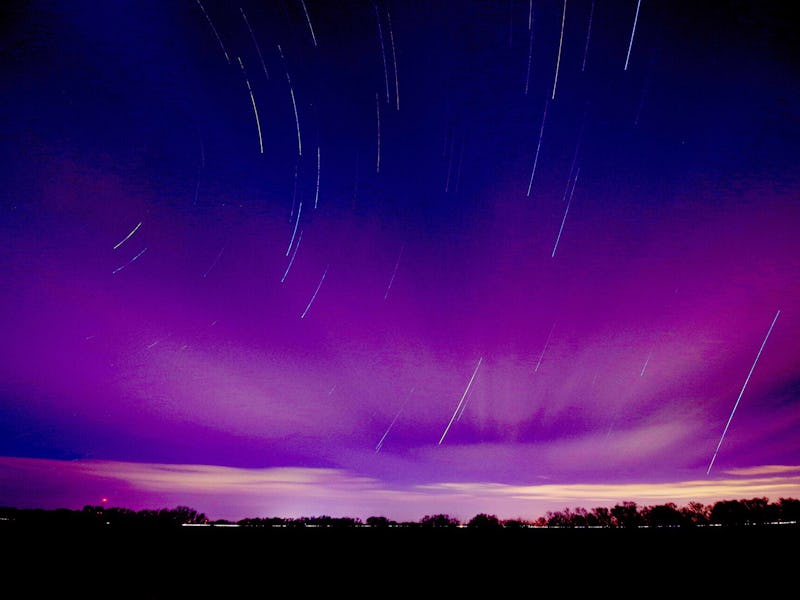How to See the Quadrantids, the First Big Meteor Shower of the Year
Let's start 2018 off with a stellar spectacle.

After the long hangover from the holidays, we could all use a little light show. Thankfully, the cosmos are coming through — the first meteor shower of 2018 will peak in the first week of January.
The Quadrantids marks the first major meteor shower of the new year. It can be active from the end of December through the first few weeks of January, however, the storm typically peaks within the first few days of the new year. In 2018, the shower will peak on the night of January 3 into the early hours of January 4, according to Time and Date.
Most meteor showers get their names from the constellations they appear to radiate from in the night sky. For example, the Geminids are named because to an observer on Earth, they seem to emerge from the constellation Gemini. But the Quadrantids are oddballs, because they’re named after the constellation Quadrans Muralis, which is no longer recognized by the International Astronomical Union (IAU). In fact, in 1922, the constellation was “left off a list” drawn by the IAU, according to Time and Date. Talk about being snubbed.
Though the name for the meteor shower was never changed, it’s now sometimes called the Bootids after the constellation the IAU now recognizes, called Boötes. It sounds like an IKEA nightstand, but we promise it’s actually a thing.
The shower is also associated with an asteroid called 2003 EH1, which is thought to be an “extinct comet.”
“It was either a piece of a comet or a comet itself, and then it became extinct,” NASA meteor expert Bill Cooke told Space.com, “which means that all the ice and other volatiles on the comet have evaporated.”
Courtesy of the IAU
Of course, just because the Quadrantids appear to come from the IKEA constellation doesn’t mean that’s the only place you can see them. Viewers should be able to see the Quadrantids anywhere in the night sky, unaided by any sort of fancy equipment. With some luck, observers can catch up to 11 meteors per hour, but the problem this year is that the Full Wolf Moon — which will occur between January 1 and 2 in 2018 — is a supermoon. The brightness of the moon could make it difficult to see some of the fainter meteors.
But good things come to those who wait. and if you’re living in the Northern Hemisphere, you deserve an extra special viewing experience for waiting in the frigid cold. Hopefully, the Quadrantids deliver something awesome to thaw out our icy hearts.